Franklin's Gull at Devil's Hole
Published: November 06, 2013
Tags: Life List Happenings, Franklin's Gull, Ring-billed Gull, Herring Gull, Great Black-backed Gull, Carolina Wren
Devil's Hole State Park is an area along the Niagara River where you can hike, picnic, and get a great view at the swirling rapids of the river. It's also a spot where gulls come to feed. The nearby Power Vista's water outlets empty into the churning river releasing cut-up fish parts that the Power Vista's turbines create. This makes for easy pickings and good eating for the gulls. Each fall, hundreds, probably thousands, of young and adult Bonaparte Gulls can be found along here. Doug and I estimated 1,400 were here today.
And amongst all those Bonapartes, somehow - and I don't know how - Betsy Potter found one small gull that was different from all the hundreds and hundreds of Bonaparte Gulls (or Bonys, as people call them). Amazing!
Responding to her great find, Doug and I went down there this afternoon and began scanning through all the pretty, little, light gray and white bonys to see if we could find that one gull.
A Franklin's Gull is just about the same size as a Bonaparte's Gull only a little bigger - about an inch bigger. At the distance we were at, that was nearly imperceptible. The Franklin's Gull has a darker back and a little more black around the eyes, with rather handsome white eye rings. In the winter, its head is white with a dark cap. I've never seen one in breeding plumage, but at that time, its head is all black. The beak and feet are dark (in the winter) - with a red tinge to the feet. In the spring, their feet are red-orange.
Well, after about an hour of tedious scanning, wouldn't you know - we found it! I'm still rather amazed we did. And once found and studied, we could see just how different this gull really was from the bonys.
Every once in awhile, one of these more western individuals gets off course and pays Western New York a visit. I was very glad to have the opportunity to see this striking species.
An interesting fact about the Franklin's Gull is that they build floating nests. Their nests eventually begin to deteriorate and sink, so the parents have to spend time each day maintaining the nest. Even the older chicks help out. They do this nest maintenance every day until just about a week before the colony departs on their migratory trip to the west coast of South America.
Betsy had also seen a Glaucous Gull here yesterday but we were not able to find that bird. We did pick out about 20 Herring Gulls, 3 Ring-billed Gulls, and 2 Great Black-backed Gulls. And to keep things fun, as we were looking over the gulls, a pair of Carolina Wrens called out a couple different varieties from their repertoire of songs, much to our delight!
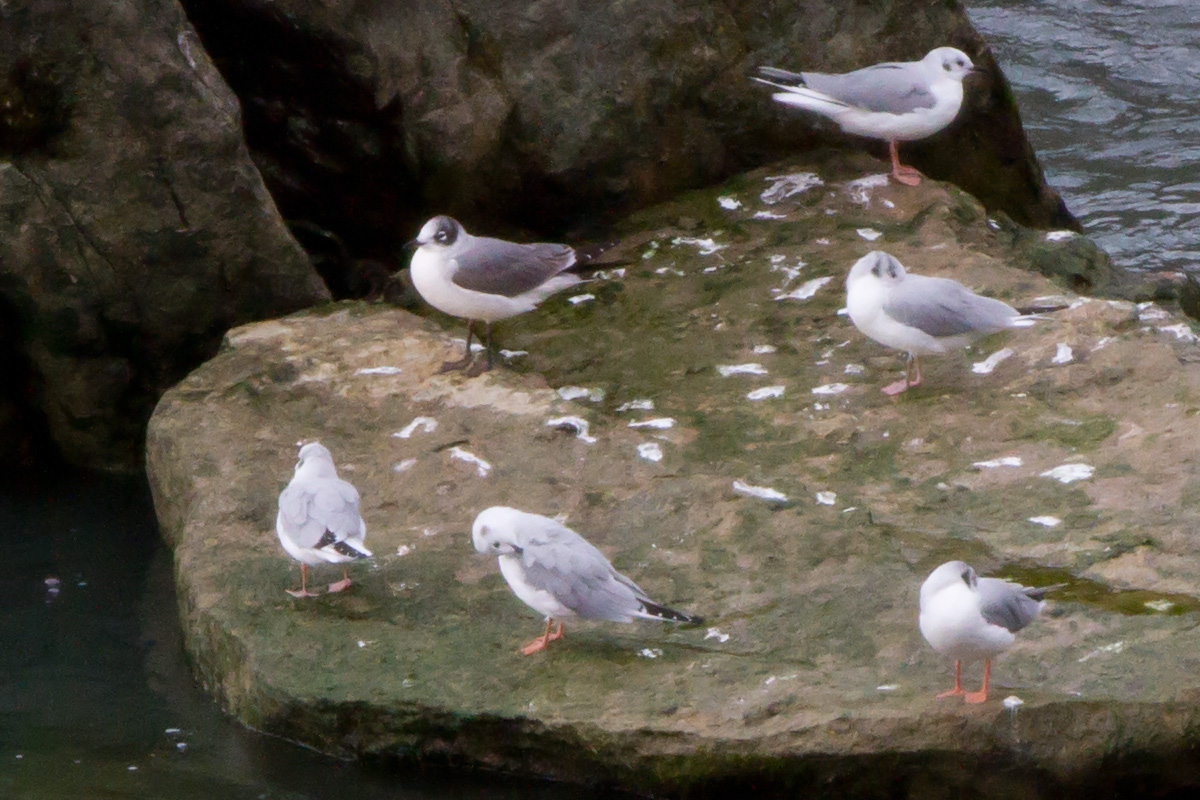
Franklin's Gull sitting with some bonys
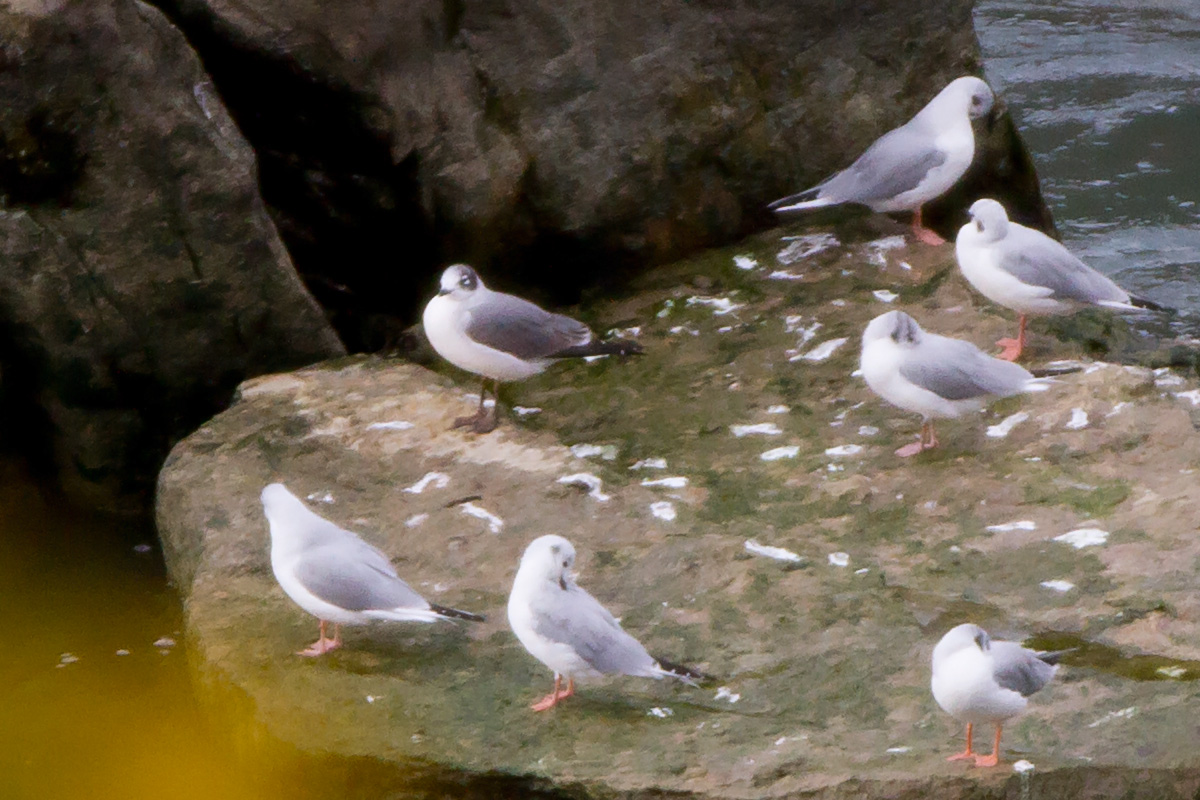
Franklin's Gull

Franklin's Gull
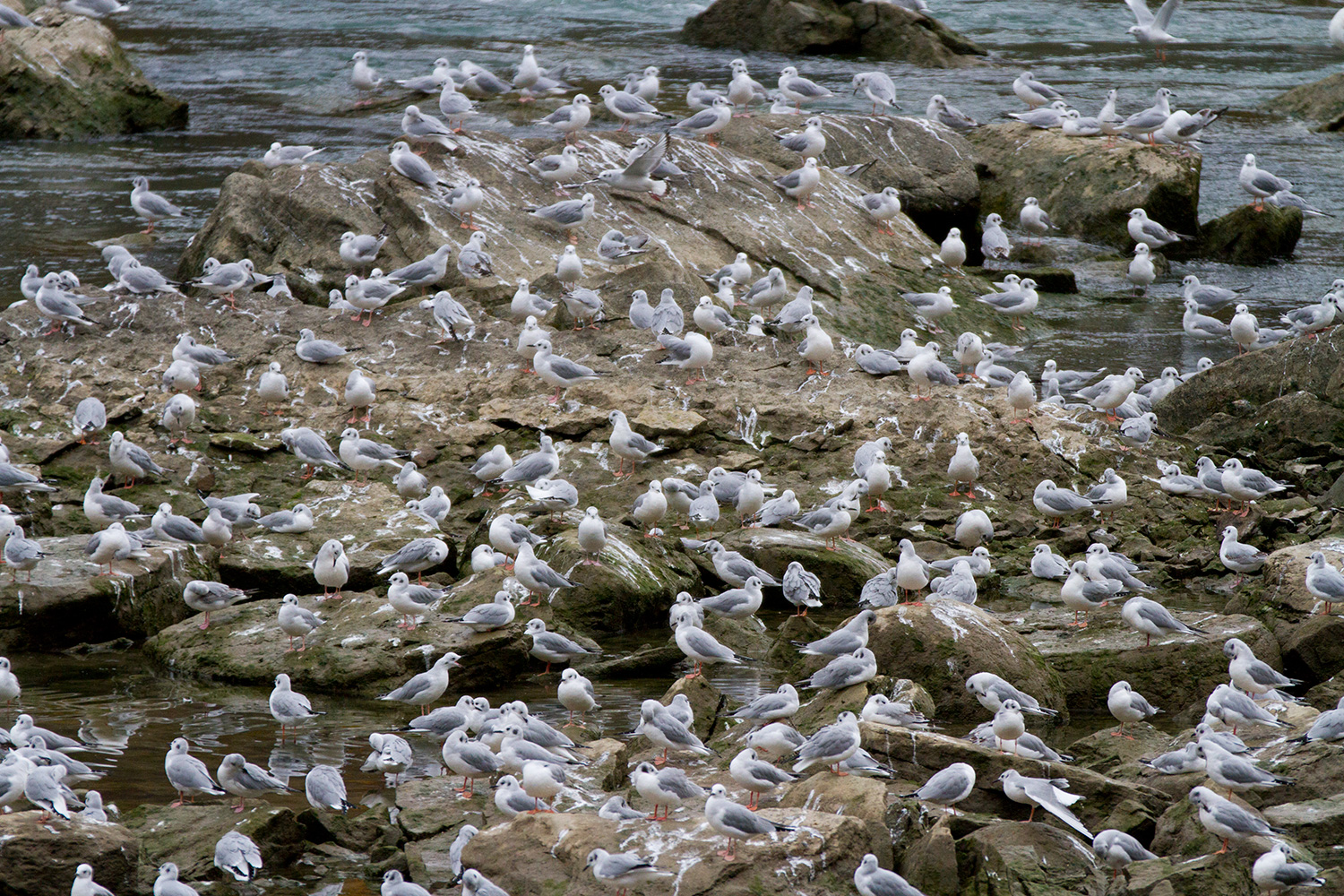
Just a small portion of all we were scanning!
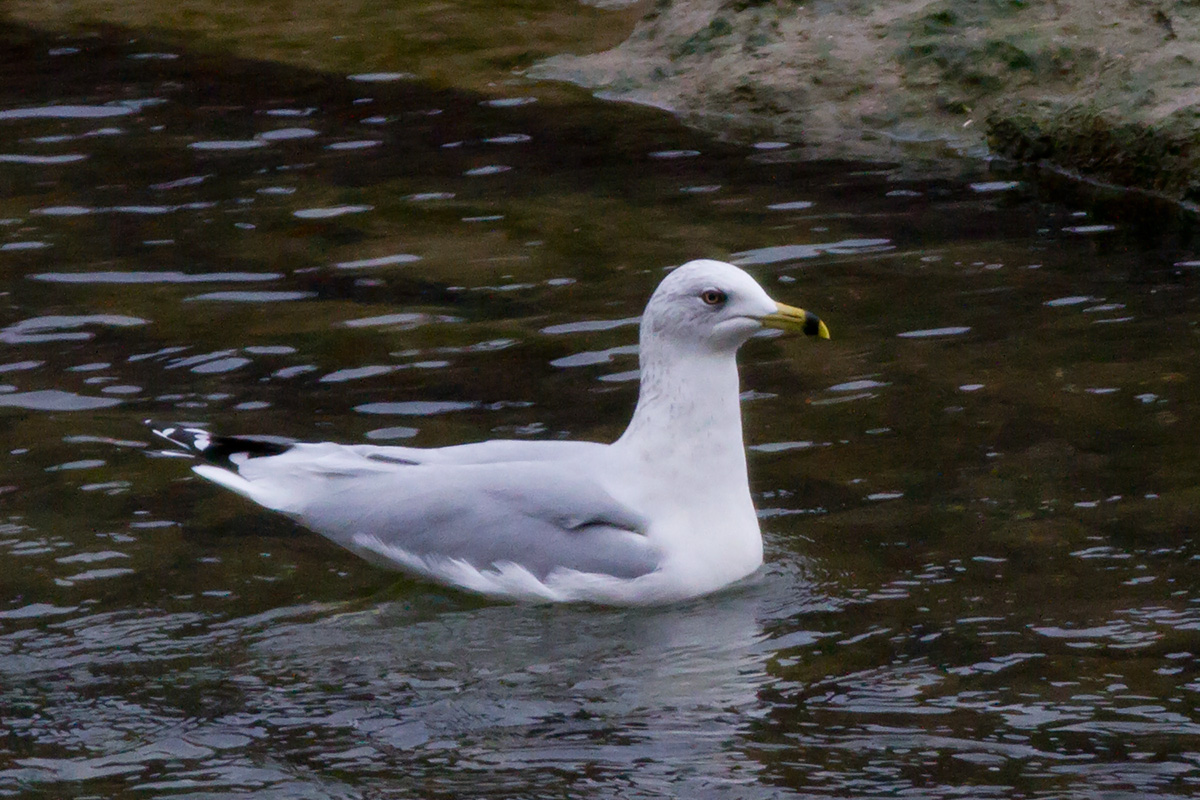
Ring-billed Gull - a much larger gull and the most common gull here in Western New York
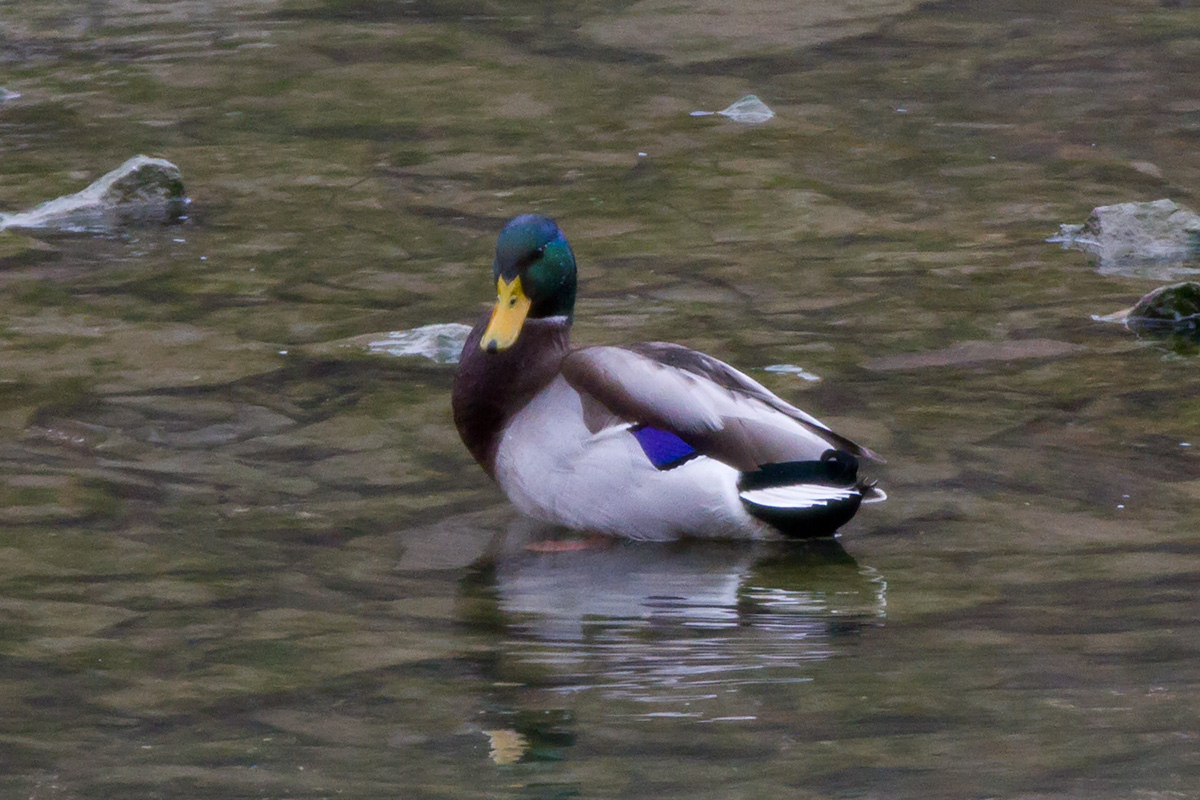
A nearby Mallard - still beautiful in spite of how common it is!

Great series of photos! And yes, I agree and think Mallards are very attractive birds.
Go Back
Go to Top